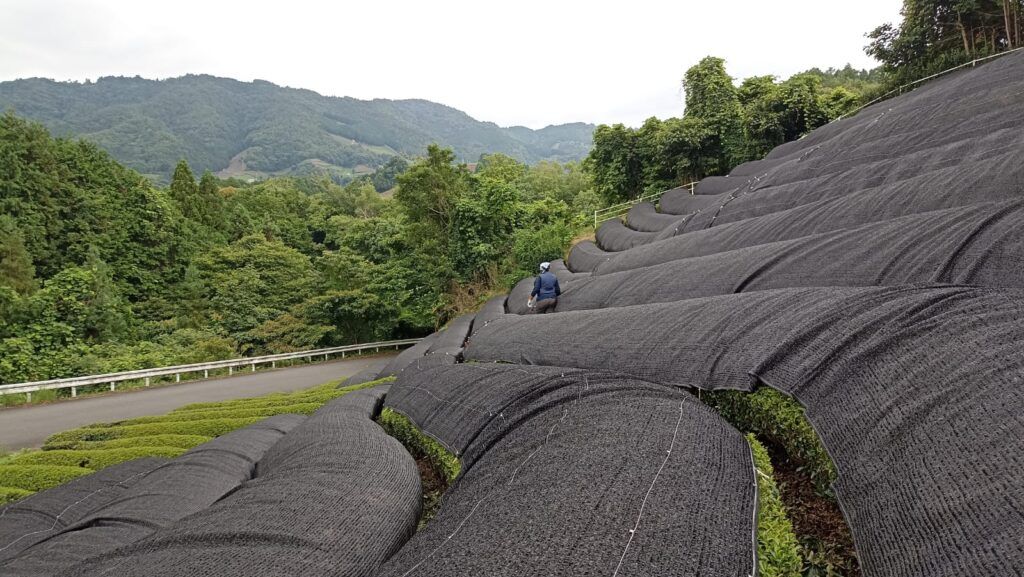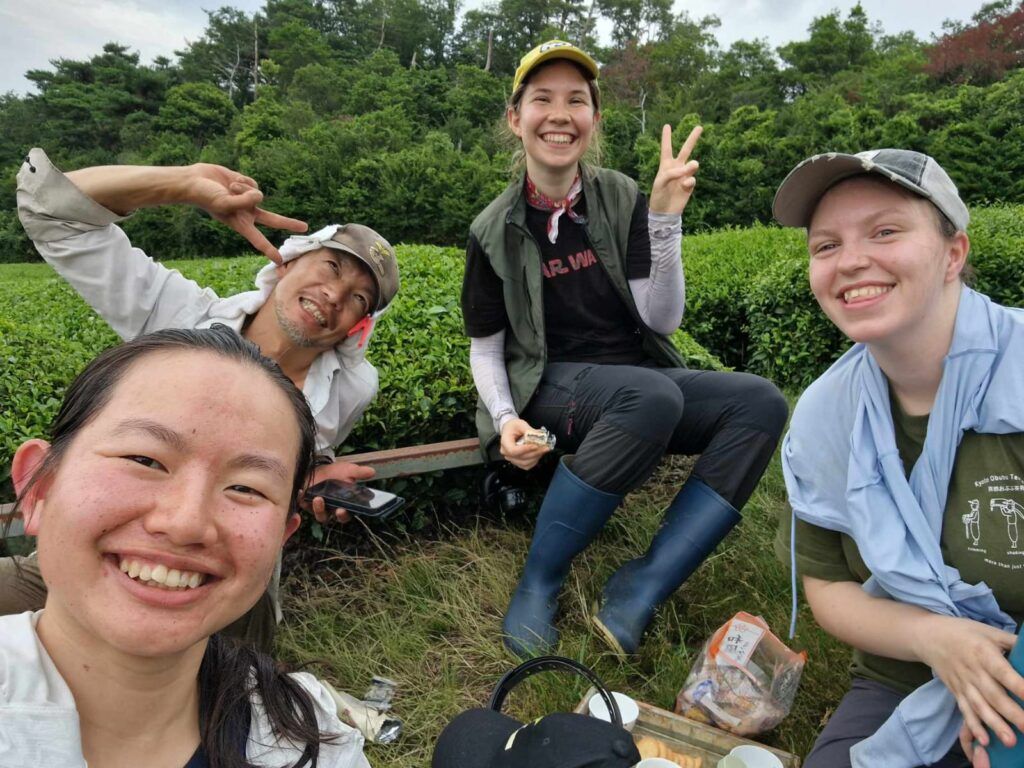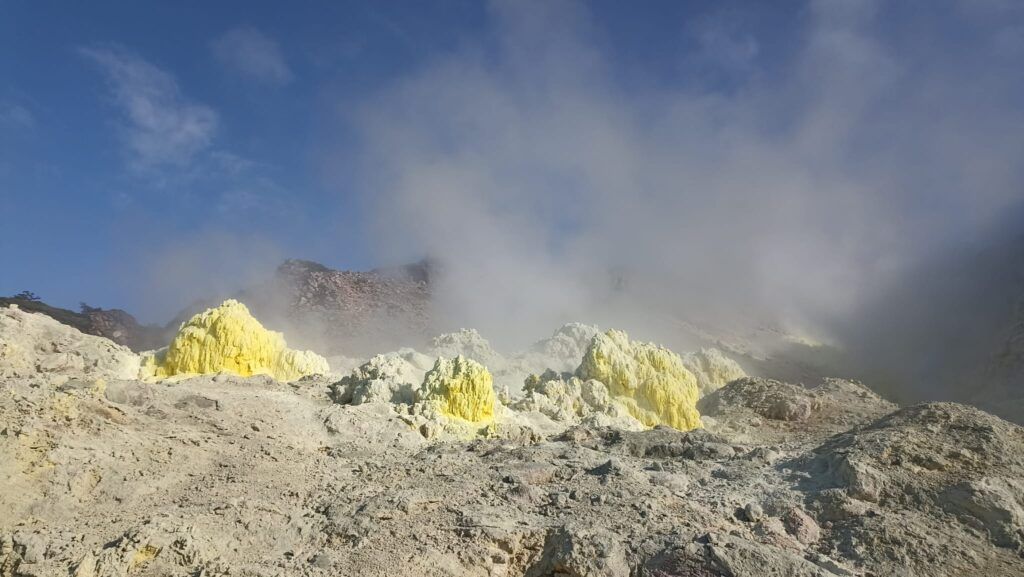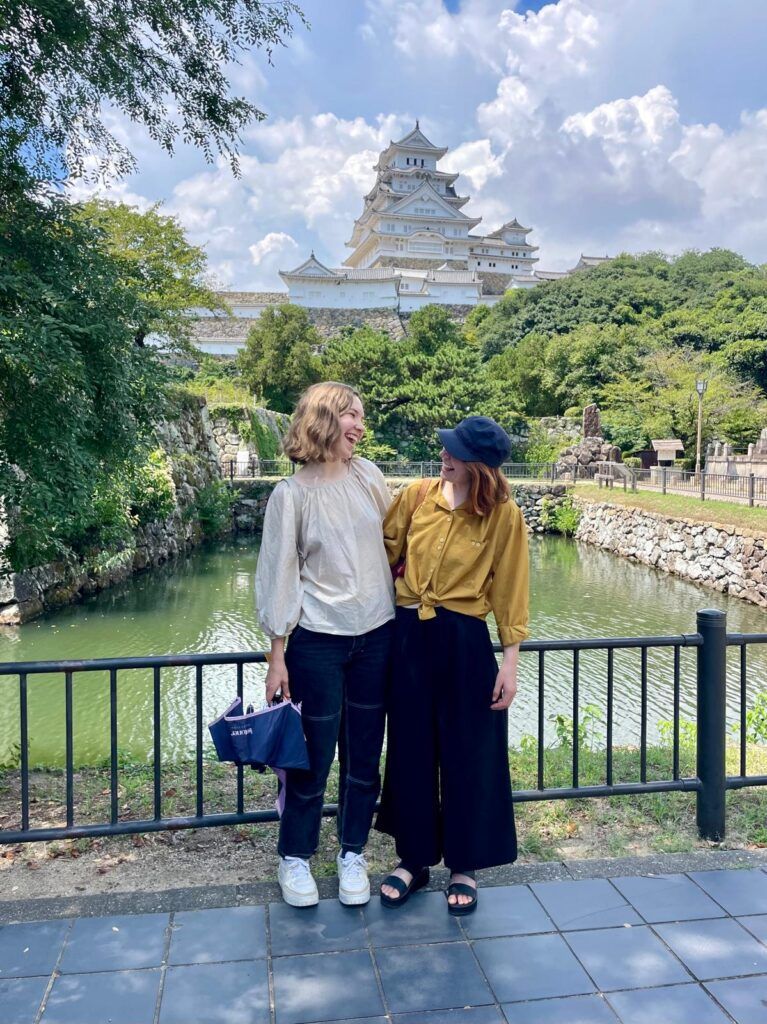Hello everyone!
You might have read my Spring Blog about my first quarter at Obubu. If you are interested in learning more about what assistant managers get up to in the summer and what I did in my second quarter here, keep reading!
Summer in Japan is no joke: 37°C at 80% humidity is what the office thermometer seemed to display daily for 3 months straight. Of course this is an exaggeration as there are some variations between days and early July is a bit cooler thanks to the high rainfall. However, coming from France where temperatures above 35°C are considered a heatwave and humidity is low, this was definitely outside of my comfort zone. While uncomfortable, you do get used to the constant sweating and you learn how to best manage the heat.
One of the key summer activities on a tea farm is the Summer harvest. With the summer buds having a short dormancy period compared to the spring buds, fewer nutrients are concentrated in the leaves, leading to a slightly different taste than the previous harvest. For this reason, we produce different teas in the summer than in the spring. For example, in this period, we harvest tea leaves for Sencha of the Summer Sun, Sencha of Brightness, Premium Cooking Matcha and Excellent Cooking Matcha. Compared to the spring, this harvest is much hotter but more relaxed. Contrary to what one might think, the key to farming in high temperatures is not shorts and t-shirts, but more layers (to be protected from the sun from head to toe) and fan vests! While they do not completely cool you down, this breeze makes a world of a difference when you are sweating all day. As long as you are well prepared for the heat (with salt tablets, sports drinks, and lots of water) and not phased by the idea of sweating buckets, the summer harvest can be very fun.



If you read the Obubu Newsletter (which I highly recommend and not just because I co-write it with assistant manager #8 Katrina), then you are probably aware that summer at Obubu is also Wakoucha (Japanese black tea) making season! Interns get the chance to harvest and process their own tea in batches of 20-30 kg of leaves. I made my own batch called ブリオ茶 (brio-cha like the french pastry brioche) from 5 kg of leaves by withering for one day, machine rolling and finally oxidizing under a bamboo tray for 4 hours. This quick oxidation resulted in spicy and floral aromas which, after drying slightly mellowed out and turned to more fruity flavours.


Towards the end of the season, all of this year’s intern and staff black teas (14 teas in total) were compared in a tea tasting competition. Amanda (intern #173) won first place with her smoky wakoucha and Jordan (intern #172) came in at a close second spot with a complex floral and fruity wakoucha. If you are wondering about my tea, Brio-cha managed to get one vote which did not put it on the podium but is still better than none!

August is typically the month during which staff members take their summer holidays as it is one of the least busy periods of the year: there is little to no farming and very few tourists come to Japan at this time. To escape the Japanese summer heat and humidity, I chose to explore Japan’s northenmost island Hokkaido. By renting a car on the island for even just a few days, one can experience many varied and jawdropping landscapes, from lakes, beaches, mountains, forests, and flower fields, to volcanoes, and natural hot springs, it is truly a wonder. The local cuisine is also famous for seafood, curry soups, and other less common foods in Japan like cheese and wine thanks to Hokkaido’s cooler weather.






After a nature-filled itinerary in Hokkaido, Mac (assistant manager #5) and I headed south for a more culture oriented trip. With our sail set to the art islands of Naoshima, we stopped at several landmarks on the way. Our first destination was the incredible Himeji castle, the largest and one of Japan’s oldest remaining medieval buildings. The next stop was Bizen, a small town famous for its pottery which is considered the oldest of the 6 ancient kilns pottery styles (Bizen-yaki, Shigaraki-yaki, Tokoname-yaki, Seto-yaki, Tamba-yaki and Echizen-yaki). After meeting a few potters and spending a bit too much money on teaware, we finally headed to Naoshima, to visit beautiful museums, see famous art installations (like artist’s Yayoi Kusama’s pumpkin sculpture), and of course drink tea while overlooking Hiroshi Sugimoto’s Glass Teahouse art installation.



Back at Obubu, Akky-san taught interns and staff how to hand-make sencha in a handrolling event for everyone to learn about this traditional way of making sencha in Japan. This was different to the seasonal hand-picking and rolling events where the leaves are pan fired and rolled, but very similar to Kenta-san’s handrolling workshop with steamed leaves and traditional handrolling table “hoiro”.


The summer closed off with the last weekend of the batch of summer interns Noe and Jocelyn during which a typhoon was expected to hit Wazuka. We hid from the typhoon by watching movies and sharing tea and homemade foods in the Obubu tearoom. The typhoon thankfully never actually hit Wazuka and we were able to share beautiful moments while enjoying an unforgettable sunset.

See you soon for more tea adventures!
またね!
– Alix

